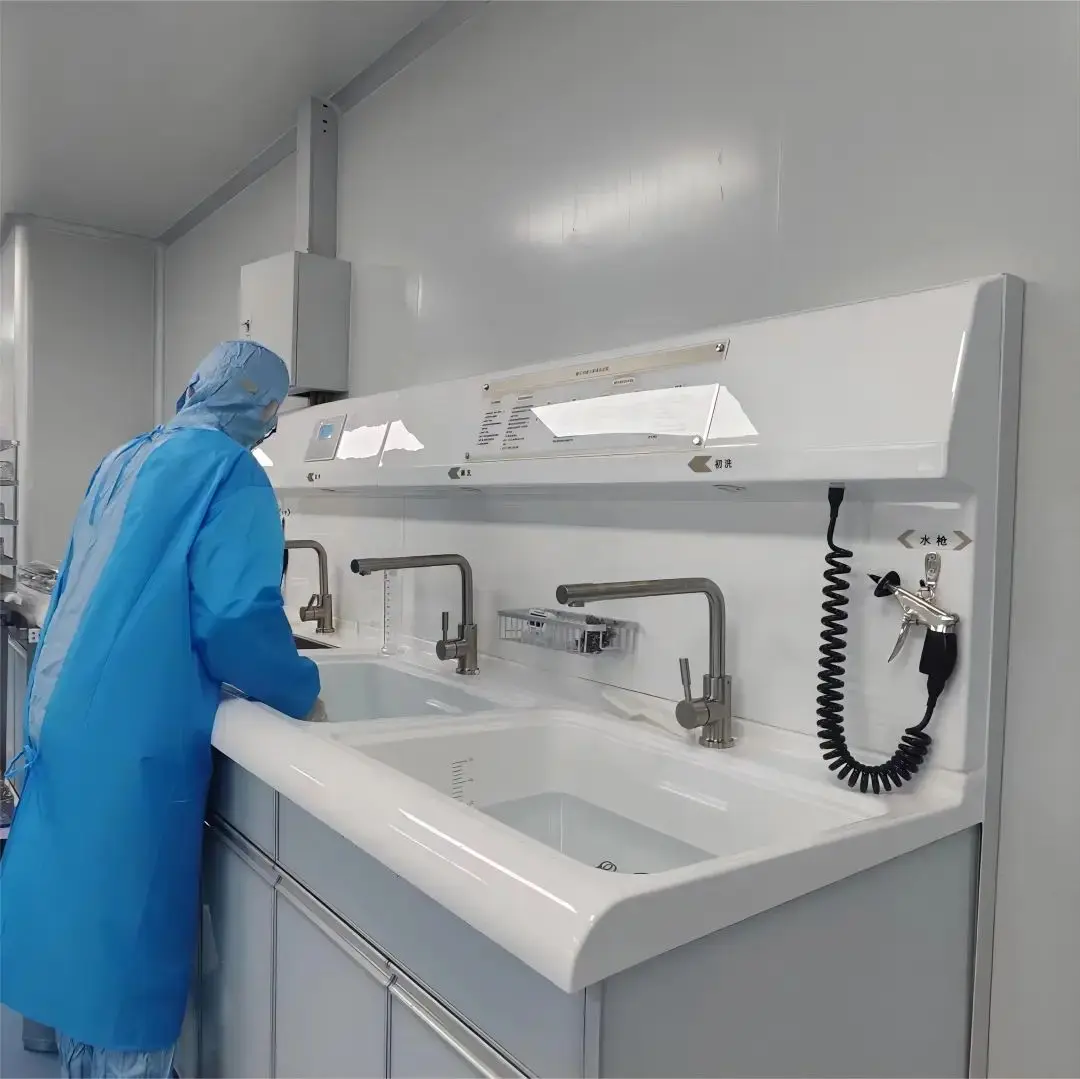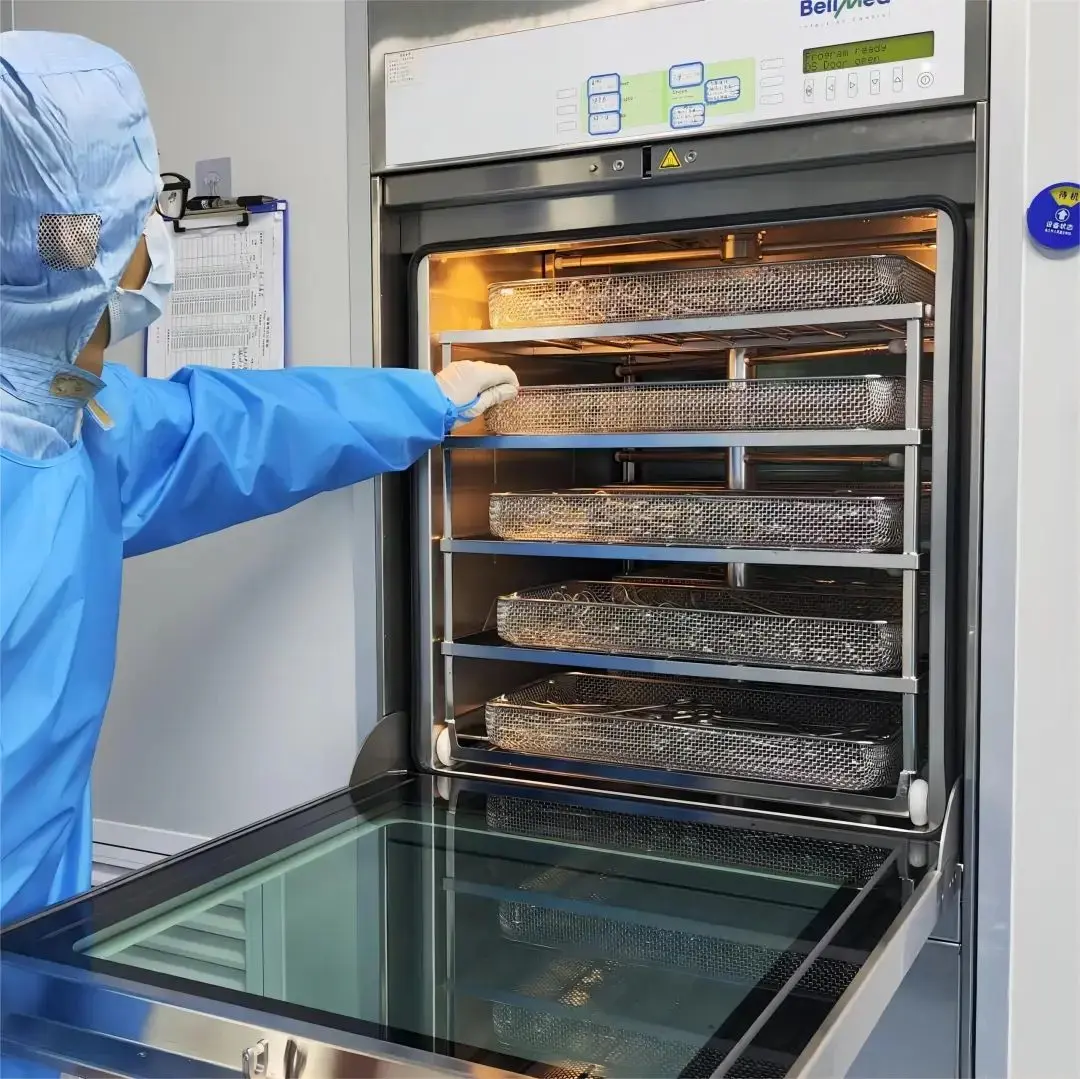
Reprocessing of Reusable Medical Devices ISO15883 Test
Purpose of Cleaning Validation
To confirm that the specified cleaning method and cleaning agents can effectively remove contaminants from the test product.
Cleaning Validation Implementation Plan
1. Basic Information
1) Test Product Information
Clearly define the product's name, model specifications, intended use, and structural composition. If the registration unit includes mULtiple models, specify the representative model selected for testing and the rationale behind the selection.
2) Type of Cleaning
State the type of cleaning being validated: manual and/or automated. The cleaning types should cover those provided in the product's instructions for use.
3) Cleaning Tools
If specific cleaning tools are provided for the product, a complete list and their purposes should be included.
4) Cleaning Agents
List all cleaning agents used in this test, including name, type, manufacturer, and relevant license number (if applicable). The cleaning agents should represent the type specified in the instructions for use, and the choice of agent should be justified.
5) Washer
If automated cleaning is used, specify the name, model, manufacturer, and medical device registration certificate number of the washer validated.

2. Artificial Contamination
1) Artificial Contaminants
Specify the components of the artificial contaminant, including all ingREDients and their concentrations. The artificial contaminant should simulate substances the product would contact during clinical use and should be the most difficult to clean. MICroorganisms are not recommended as contaminants, as their removal does not represent the cleaning efficacy for organic matter. Justification for the choice of artificial contaminant must be provided.

2) Contamination Sites
Specify the contamination sites, which should be the most difficult parts of the product to clean. If multiple parts come into contact with the human body, it is recommended to contaminate all such parts. Provide a rationale for the selected contamination sites.
3) Contamination Method
Describe the procedure for applying the artificial contaminant to the test samples.
3. Test Group Configuration
Set up the following groups: test sample group, negative device control group, positive device control group, negative control group, and positive control group. Specify the configuration details of each group, including sample size.
4. Cleaning Methods
Clearly define both the routine cleaning method and the validation cleaning method.
The validation cleaning method should use the most challenging conditions, such as the shortest time, lowest temperature, and lowest dilution level. Compare and justify the differences between the routine cleaning method and the validation method. The routine method must be consistent with that stated in the instructions for use.
5. Evaluation Methods
Clearly define the calculation method for the results and establish acceptance criteria for the residual contamination indicators. At least two test items should be selected, and each should include data from at least three samples.
1. Visual Inspection:
- ANSI/AAMI ST98 does not specify exact values.
- ISO15883-5 requires no visible contamination.
2. Protein:
- ANSI/AAMI ST98 limit: ≤6.4 μg/cm²
- ISO15883-5: Alert level ≥3 μg/cm²; Action level ≥6.4 μg/cm²
3. Hemoglobin:
- ANSI/AAMI ST98 limit: ≤2.2 μg/cm²
- ISO15883-5: Alert level ≥1.0 μg/cm²; Action level ≥2.2 μg/cm²
4. Carbohydrate:
- ANSI/AAMI ST98 limit: ≤1.8 μg/cm²
- ISO15883-5: Alert level ≥0.9 μg/cm²; Action level ≥1.8 μg/cm²
5. ATP (Adenosine Triphosphate):
- ANSI/AAMI ST98 limit: ≤22 femtomoles/cm²
- ISO15883-5: Alert level ≥10 femtomoles/cm²; Action level ≥22 femtomoles/cm²
6. TOC (Total Organic Carbon):
- ANSI/AAMI ST98 limit: ≤12 μg/cm²
- ISO15883-5: Alert level ≥6 μg/cm²; Action level ≥12 μg/cm²
7. Endotoxins:
- ANSI/AAMI ST98: No data
- ISO15883-5: Alert level ≥2.2 EU/cm²; Action level ≥20 EU/device
8. Extraction Efficiency:
- ANSI/AAMI ST98 requires >70%
- ISO15883-5 does not mention relevant alert or action levels
Cleaning Validation Reference Standards
- ANSI/AAMI ST98:2022 – Cleaning validation for healthcare products – Requirements for development and validation of cleaning processes for medical devices
- AAMI TIR12:2020 – Designing, testing, and labeling reusable medical devices for reprocessing in healthcare facilities: A guide for medical device manufacturers
- ISO 17664-1:2021 – Processing of health care products – Information to be provided by the medical device manufacturer – Part 1: Critical and semi-critical medical devices
- ISO 17664-2:2021 – Processing of health care products – Information to be provided by the medical device manufacturer – Part 2: Non-critical medical devices
- YY/T 0802-2020 – Information provided by the medical device manufacturer for the processing of medical devices
- ISO 15883.1:2006 – Washer-disinfectors – Part 1: General requirements, terms and definitions, and tests
- ISO 15883.2:2006 – Washer-disinfectors – Part 2: Requirements and tests for washer-disinfectors employing thermal disinfection for surgical instruments, anesthetic equipment, bowls, dishes, receivers, utensils, glassware, etc.
- ISO 15883.3:2006 – Washer-disinfectors – Part 3: Requirements and tests for washer-disinfectors employing thermal disinfection for human waste containers
- ISO 15883.4:2018 – Washer-disinfectors – Part 4: Requirements and tests for washer-disinfectors employing chemical disinfection for thermolabile endoscopes
- ISO 15883.5:2021 – Washer-disinfectors – Part 5: Performance requirements and test methods for demonstrating cleaning efficacy
- ISO 15883.6:2011 – Washer-disinfectors – Part 6: Requirements and tests for washer-disinfectors employing thermal disinfection for non-invasive, non-critical medical devices and healthcare equipment
- ISO 15883.7:2016 – Washer-disinfectors – Part 7: Requirements and tests for washer-disinfectors employing chemical disinfection for non-invasive, non-critical medical devices and healthcare equipment
- YY/T 0734.1-2018 – Washer-disinfectors – Part 1: General requirements and tests
- YY/T 0734.2-2018 – Washer-disinfectors – Part 2: Requirements and tests for washer-disinfectors employing thermal disinfection for surgical and anesthetic instruments
- YY/T 0734.3-2018 – Washer-disinfectors – Part 3: Requirements and tests for washer-disinfectors employing thermal disinfection for human waste containers
- YY/T 0734.4-2016 – Washer-disinfectors – Part 4: Requirements and tests for washer-disinfectors employing thermal disinfection for non-invasive medical devices
- YY/T 0734.5-2020 – Washer-disinfectors – Part 5: Requirements and tests for washer-disinfectors employing chemical disinfection for non-heat-resistant non-invasive medical devices
Email:hello@jjrlab.com
Write your message here and send it to us
 What Are the Testing Items of California Propositi
What Are the Testing Items of California Propositi
 E-Cigarette EU TPD Testing
E-Cigarette EU TPD Testing
 Testing Certification for E-cigarettes Exported to
Testing Certification for E-cigarettes Exported to
 What is Amazon US CPC Certification?
What is Amazon US CPC Certification?
 UK Toy Safety Regulation Standard EN 71-13
UK Toy Safety Regulation Standard EN 71-13
 What is EU UFI Registration?
What is EU UFI Registration?
 EU UFI Registration for E-cigarette E-liquid
EU UFI Registration for E-cigarette E-liquid
 How to get the MSDS Report for Electronic Cigarett
How to get the MSDS Report for Electronic Cigarett
Leave us a message
24-hour online customer service at any time to respond, so that you worry!




